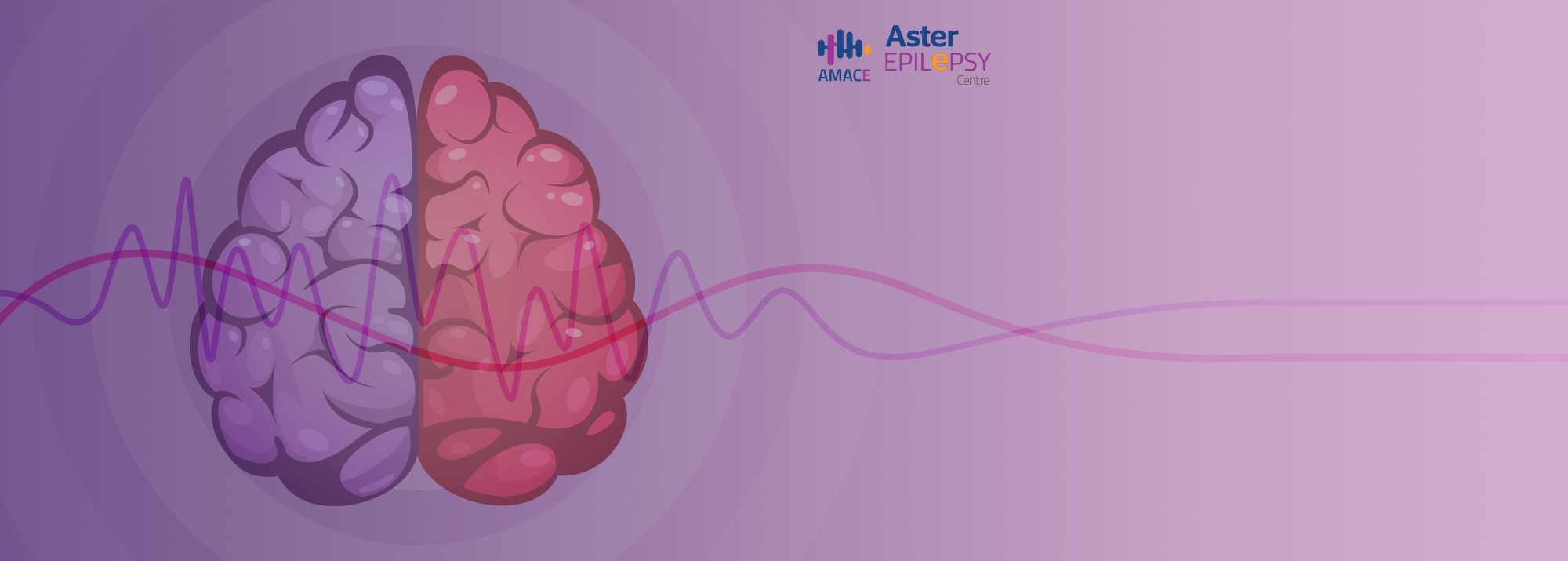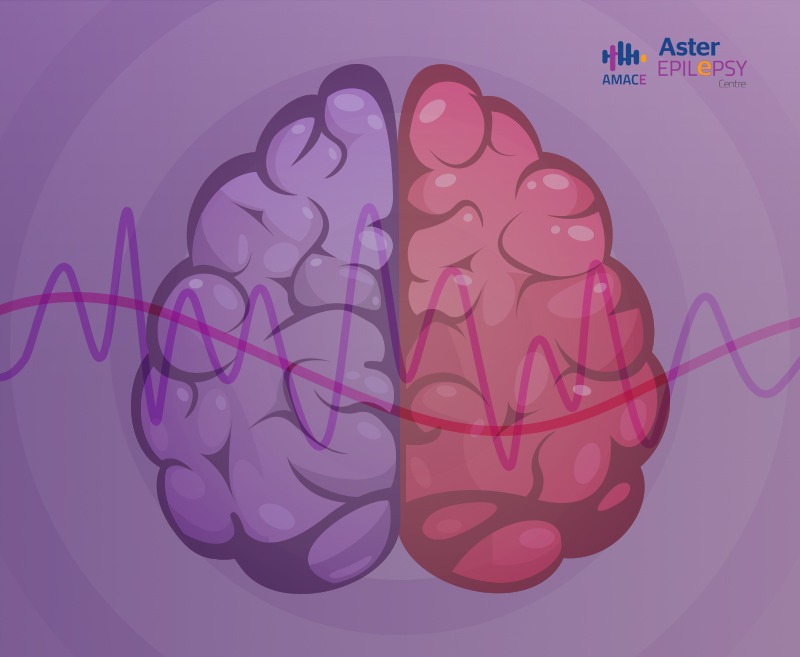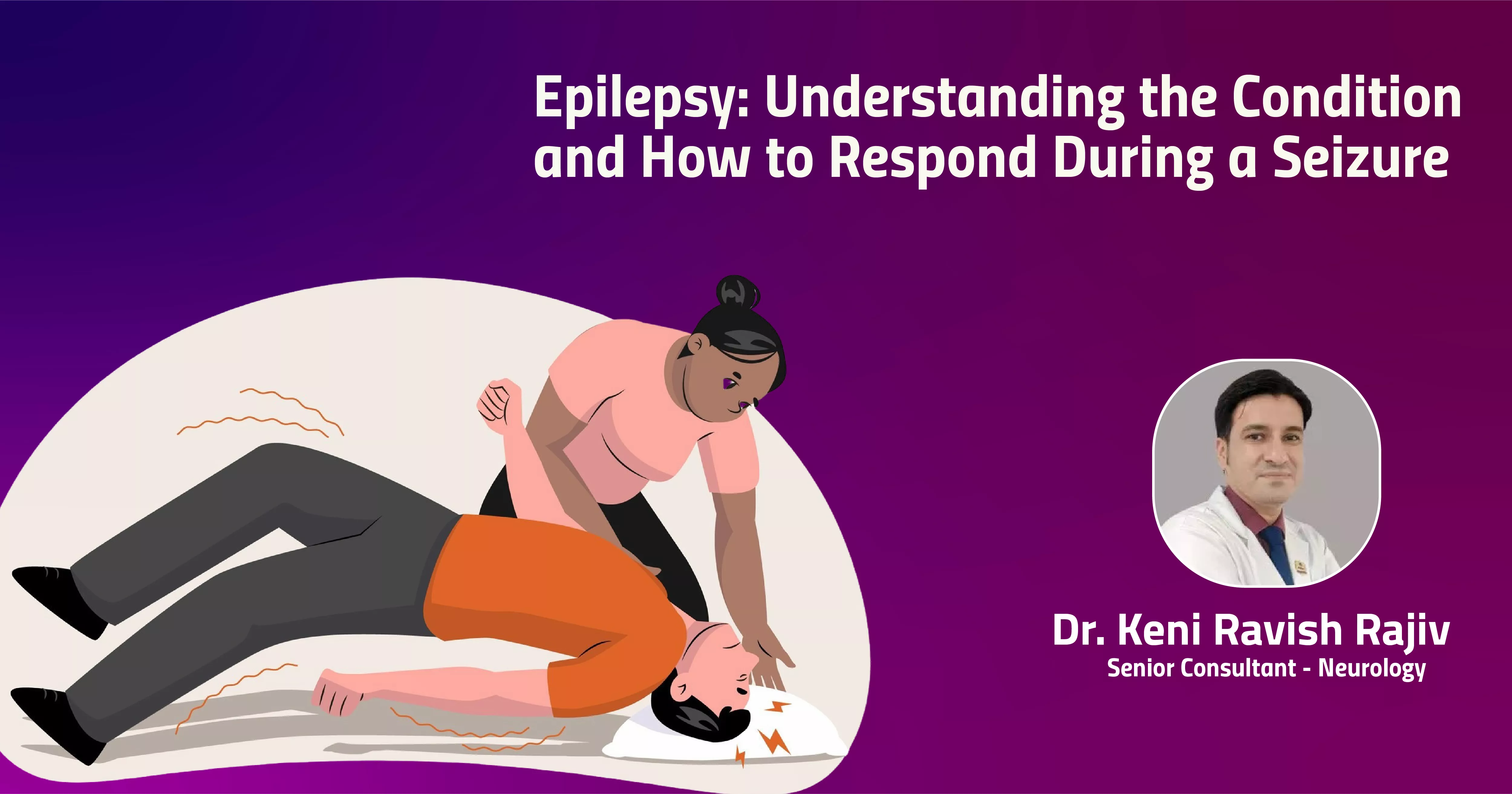Epilepsy is the fourth most common neurological disorder, affecting people of all ages and characterized by unprovoked seizures. A seizure occurs due to sudden, uncontrolled electrical disturbances in the brain, leading to changes in behavior, movements, feelings, or levels of consciousness. Epilepsy is diagnosed when a person experiences two or more unprovoked seizures or a single seizure with a high likelihood of recurrence. Globally, epilepsy affects 50 million people, with 80% residing in developing countries. While over 70% of patients achieve long-term remission or seizure freedom with anti-seizure medications (ASMs), the remaining 30% may develop drugresistant epilepsy, making them potential candidates for epilepsy surgery.
SPECIALIZED TREATMENTS AND SERVICES
1. Anti-Seizure Medications (ASMs): The most common treatment, ASMs help regulate brain activity to control seizures.
2. Epilepsy Surgery: For patients who do not respond to medications, surgery involves removing or disconnecting the part of the brain responsible for seizures.
3. Neurostimulation: This includes implanting devices to stimulate specific brain areas, reducing seizure frequency.
Options include:
- Vagus Nerve Stimulation (VNS): A device implanted in the chest sends electrical signals to the vagus nerve.
- Deep Brain Stimulation (DBS): Electrodes are implanted in specific brain regions to deliver electrical stimulation.
- Responsive Neurostimulation (RNS): A brain-implanted device monitors activity and delivers stimulation to prevent seizures.
4. Ketogenic Diet: A high-fat, low-carbohydrate diet effective for some children with epilepsy, altering brain chemistry to reduce seizures.
5. For patients with drug-resistant epilepsy, surgical options include:
- Resective Surgery: Removal of the seizure-causing brain region.
- Disconnective Surgery: Cutting connections between the seizure-causing area and other brain regions.
- Corpus Callosotomy: Severing the corpus callosum to prevent seizure spread between brain hemispheres
Our Doctors
We have some of the best specialists from around the world, they bring years of experience and offer evidence-based treatment to ensure the best care for you.
Advanced Technology & Facilities
Well equipped with the latest medical equipment, modern technology & infrastructure, Aster Hospital is one of the best hospitals in India.
Our advanced diagnostic tools ensure accurate evaluation and treatment planning:
- Routine 32-channel digital video EEG
- Long-term 128-channel video EEG monitoring
- Functional MRI and WADA test for brain function assessment
- 3 Tesla MRI for detailed brain imaging
- PET (Positron Emission Tomography) and SPECT (Single-Photon Emission Computed Tomography)
- ECOG (Electrocorticography) and Cortical Mapping
- SSEP (Somatosensory Evoked Potential) and MEP (Motor Evoked Potential)
Why Choose Aster MIMS Calicut?

At Aster MIMS Calicut, we are committed to providing holistic care for epilepsy through our AMACE -Aster MIMS Advanced Centre for Epilepsy. Our centre employs cutting-edge technology and a multidisciplinary approach to improve the lives of individuals living with epilepsy. Our team of renowned epileptologists, functional neurosurgeons, and healthcare professionals work together to deliver personalized care and innovative treatment solutions. We prioritize patient comfort, safety, and positive outcomes at every stage of the treatment journey, from advanced diagnostics to precise surgical interventions and comprehensive follow-up care.
At Aster MIMS Calicut, our AMACE Epilepsy Centre is dedicated to transforming lives through advanced diagnostics, tailored treatments, and compassionate care. If you or a loved one is living with epilepsy, consult our specialists to explore the best treatment options for your needs. Visit us to learn more about our comprehensive epilepsy care program.
FAQs
Want to find out more about the treatment? The answer to your questions can be found below.
What are different types of epilepsy surgeries?
Epilepsy surgeries are of two types. In patients where we find a small, focal brain area responsible for epilepsy, we go for resection of that area. These surgeries are called curative surgeries where once that area is removed; patient will be mostly free of epilepsy. However, there is a group of patients in which a large area is responsible, or we could not define a small area or removing complete area is not feasible; surgeries are meant to just reduce seizure frequency and improve quality of life. These surgeries are called palliative surgeries.
What are complications with epilepsy surgery?
Epilepsy surgery is a carefully planned procedure, carried out under optimal circumstances to remove the region of brain causing the seizures, and to spare parts of the brain necessary for everyday functions.
Complications are very infrequent in epilepsy surgery, major complications like motor deficits, language deficits, vegetative states and disabilities are seen in 3-5% of cases. Other treatable complications like infections, prolonged hospitalizations, transient deficits, speech problems, mood problems, visual field deficits are common and do not alter the normal daily life. Overall, epilepsy surgery is safe surgery, and it improves quality of life of many patients and their care takers significantly.
What is Epileptology and what is the role of epileptologist?
Epileptology is a subspecialty of Neurology, focussing on evaluation and management of difficult to treat or complex epilepsy cases where seizures were not controlled despite starting anti-epileptic medications prescribed by a physician, paediatrician, or Neurologist.
Epileptologist is trained in detailed evaluation and management of complex paediatric as well as adult epilepsy cases and plays the key role in precisely finding out whether there is an epileptogenic focus in the brain which can be surgically removed to permanently cure epilepsy.
What are the investigations required for a patient with drug-resistant epilepsy?
Basic tests include Video EEG, 3 Tesla MRI epilepsy protocol and Neuropsychological assessment. Additional tests needed may be PET scan, SPECT scan, functional MRI, WADA.
What are EEG and video EEG and their necessity?
Video EEG is nothing but a simultaneous recording of EEG along with a video camera focused on you all the time. You will be admitted, and EEG leads will be connected to you. You will be under the camera for 24 hours while your EEG on. When you have a seizure, it will record the exact movements you do during your seizure activity and simultaneous EEG recordings. This will provide us with the exact idea of the area of your brain accountable for producing these seizures. Generally, 3-10 episodes of seizure will be recorded and so patients usually stay for 5-7 days in the hospital. We generally stop your drugs so that more seizures can be obtained in a short time. It is secure as you are having seizures in a controlled environment of the hospital, supported with doctors and nurses all the time.
What is a seizure?
A Seizure is a condition in which sudden, uncontrolled electrical irregularity occurs in our brain. It may cause changes in behaviour, movements or feelings, and levels of consciousness.
How long do seizures usually last?
Usually, a seizure may last from a few seconds to a few minutes, based on the type of seizure.
If I have a seizure, then does it mean that I have epilepsy?
Not always. Seizures can also happen because of other medical problems.
These problems include:
- A high fever.
- Low blood sugar.
- Alcohol or drug withdrawal.
How is epilepsy treated?
A provider and person with epilepsy can do several things to stop or lessen seizures.
The most common treatments for epilepsy are:
- Medicine: Anti-seizure drugs are medicines that limit the spread of seizures in the brain. A health care provider will change the amount of medicine or prescribe a new drug if needed to find the best treatment plan. Medicines act for around 2 in 3 people with epilepsy.
- Surgery: When seizures arise from a single area of the brain (focal seizures), the surgery to exclude that area may stop future seizures or make them easier to manage with medicine. Epilepsy surgery is mostly used when the seizure focus is located in the temporal lobe of the brain.
- Other treatments: When medicines fail to work and surgery is not possible, then other treatments can help. It includes vagus nerve stimulation in which an electrical device is placed or implanted, under the skin on the upper chest to transfer signals to a large nerve in the neck. Another option is the ketogenic diet, high fat and low carbohydrate diet with restricted calories.
How can I prevent epilepsy?
Sometimes we can prevent epilepsy. The most common ways to reduce your risk of developing epilepsy are:
- Have a healthy pregnancy. Some problems during pregnancy and childbirth may lead to epilepsy. Follow a prenatal care plan with your healthcare provider to keep you and your baby healthy.
- Prevent head injuries.
- Lower the chances of stroke and heart disease.
- Be up-to-date on your vaccinations.
- Wash your hands and prepare food safely to prevent worm infections such as cysticercosis.
What are the chances of improvement after epilepsy surgery?
Chances of seizure control depend on many variables and varies between 50-90%. If MRI shows some lesion which could be completely removed, then 9 out of 10 people can achieve seizure freedom and almost 6 out of 10 patients can be off medicine. However, outcome is in the magnitude of 50% with palliative surgeries. Outcome typically depends on the responsible pathology.
What can I do to manage my epilepsy?
Self-management is what one should do to take care of self. You can learn how to manage seizures and keep an active and full life. Begin with these tips:
- Take your medicine.
- Discuss with your doctor or nurse when you have questions.
- Recognize seizure triggers (such as flashing or bright lights).
- Keep a record of your seizures.
- Get enough sleep.
- Lower stress.
What is the incidence of epilepsy and drug-resistant epilepsy?
There are 70 million persons with epilepsy (PWE) worldwide, nearly 12 million PWE are expected to reside in India, which contributes to nearly one-sixth of the global burden. One million Indians have medically refractory seizures. An approximate 5 -6 lakh people are candidates for epilepsy surgery in India.
What is an Epilepsy Monitoring Unit (EMU?)
It is a specialized unit in the hospital for constant monitoring of brain activity using EEG and Video, where a patient is admitted for 3-5 days. This provides your doctor with a better understanding of your seizures by seeing how your brain functions and what you are physically doing during the event.
How do I prepare for the EMU Admission
To prepare for an EMU Admission:
• Wash your hair the night before or the day of the test, but do not apply any conditioners, hair creams, sprays or styling gels to your hairs. Hair products use should be avoided as it can make tougher for the sticky patches that are used to hold the electrodes to adhere to your scalp. If you have weaves or braids, need to be removed before a test is completed.
• Wear loose-fitting clothes
• Follow your physician’s instructions regarding your medication.
• Arrive at the hospital on scheduled time, delays can occur if you are late.
• You may bring electronics like a laptop to use during your stay.
• Visitors are allowed during your EMU admission. A family member or loved one who is familiar with the seizure is asked to stay along with the patient at the hospital.
What is epilepsy
Patients having two or more seizures or a tendency to have recurrent seizures, are termed to be having epilepsy.
What are the major types of seizures?
Sometimes it is difficult to determine when a person is having a seizure. A person with a seizure may look confused or as if they are staring at something that is not there. Other seizures can cause a person to fall, shake, and become unaware of what’s going on around them.
Seizures are classified into two groups.
- Generalized seizures affect both sides of the brain.
- Focal seizures affect just one area of the brain. These seizures are also called partial seizures.
What causes epilepsy?
Epilepsy can be caused due to various conditions that affect a person’s brain.
Some known causes include:
- Stroke
- Brain tumor
- Brain infection
- Traumatic brain injury or head injury
- Loss of oxygen to your brain. Example: Birth time
- Hereditary causes
- Developmental anomalies of the brain
- The cause of epilepsy is unknown for 2 in 3 people. This kind of epilepsy is termed as cryptogenic or idiopathic.
What can I do to manage my epilepsy?
Self-management is what one should do to take care of self. You can learn how to manage seizures and keep an active and full life. Begin with these tips:
- Take your medicine.
- Discuss with your doctor or nurse when you have questions.
- Recognize seizure triggers (such as flashing or bright lights).
- Keep a record of your seizures.
- Get enough sleep.
- Lower stress.
Blogs
The source of trustworthy health and medical information. Through this section, we provide research-based health information, and all that is happening in Aster Hospital.











